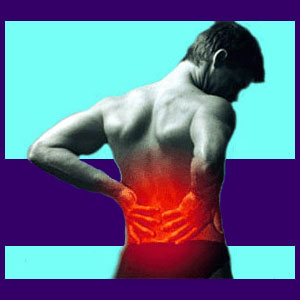
Should you use heat or ice for back pain? The best answer depends on the specific circumstances of the painful condition. Heat and ice are medical traditions going back thousands of years. They are free (or cheap), easy to use and are almost always available for providing home back pain relief. Although almost everyone knows that both ice and heat can be therapeutic, patients often wonder which to use, for how long and in what manner.
The scope of this article is to provide basic information on using heat and/or ice to treat back ache effectively at home.
Heat or Ice for Back Pain / Cool it Down
Ice therapy is very useful for certain types of muscular injuries. Ice will work well for back muscle pain especially in the first 48 hours following a suspected injury. Ice will reduce swelling and provide minor pain relief by numbing local tissue. Ice also slows down neurological impulses in the area forcing nerves to transmit less pain messages to the brain.
Ice will trigger a reflex response to the lower temperature, causing the body to increase circulation. This brings oxygen and nutrients to the area and helps to remove pain-causing waste products from the muscles. This makes ice a good physical treatment option for oxygen deprivation back pain.
Ice may be applied with a cold gel pack or simply ice wrapped well in a towel. Never apply ice directly to the skin. Do not keep ice on the area for longer than 20 minutes at a time. Many doctors recommend 20 minutes on, followed by a half hour off for maximum relief.
Heat or Ice for Back Pain / Warm it Up
Heat therapy works to increase circulation to the affected area. Once again, it is most effective at treating muscular problems, rather than spinal issues. Heat should be applied after 48 hours following an injury. Heat application too soon might cause increased swelling and discomfort in the injured area.
Heat can be applied with a heating pad, but moist heat will work much better. A hot wet towel can work wonders. Use common sense with the temperature and do not make it so hot as to cause a burn. Heat can also be applied by a professional caregiver, in the form of ultrasound, infrared or shortwave diathermy. These procedures are non-invasive and can increase the benefits from traditional heat therapy by targeting the exact source of the pain.
Do Ice and Heat for Back Pain Really Work?
I had an intimate relationship with heat and ice for back pain for many years. My chiropractors all suggested ice whenever I had an acute back spasm. The reasoning given was to “reduce the inflammation”. Now according to their own diagnoses, I suffered from degenerative disc disease and 2 herniated discs. I did not have any inflammation. Trying to understand many of these diagnoses and subsequent nonsensical treatment agendas can be impossible… but I digress.
I used ice on my back literally thousands of times… 20 minutes on, one hour off… for years. I think I might have received an occasional placebo reaction from the ice, but never enjoyed any ongoing relief. At this stage in my back pain journey, I feel heat does me the most good. 15 minutes in the hot spa tub before a swim is the best 15 minutes of my day! It relaxes body and mind completely and the wet heat permeates so nicely.
Ice and heat are excellent for muscle injuries such as bruises or strains. I have used them both successfully many times for martial arts injuries. If the cause of your back pain is muscular, it may be best to use ice for the first 2 days, followed by alternating ice and heat, 20 minutes each, every 2 hours for a day or two, then switching to heat.
The final answer to the question, “Heat or ice for pain?”: Both are perfect.




